Yi-Lin Tsai
Department of Civil and Environmental Engineering, Stanford University, Stanford, CA, USA
Let Me Speak Freely? A Study on the Impact of Format Restrictions on Performance of Large Language Models
Aug 05, 2024Abstract:Structured generation, the process of producing content in standardized formats like JSON and XML, is widely utilized in real-world applications to extract key output information from large language models (LLMs). This study investigates whether such constraints on generation space impact LLMs' abilities, including reasoning and domain knowledge comprehension. Specifically, we evaluate LLMs' performance when restricted to adhere to structured formats versus generating free-form responses across various common tasks. Surprisingly, we observe a significant decline in LLMs' reasoning abilities under format restrictions. Furthermore, we find that stricter format constraints generally lead to greater performance degradation in reasoning tasks.
Effective approaches to disaster evacuation during a COVID-like pandemic
Aug 29, 2022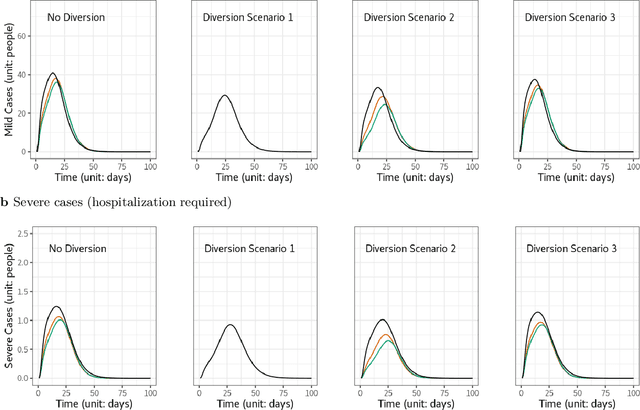

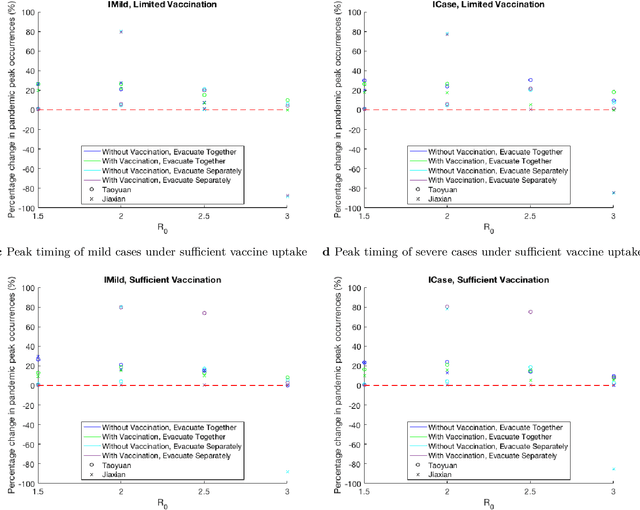
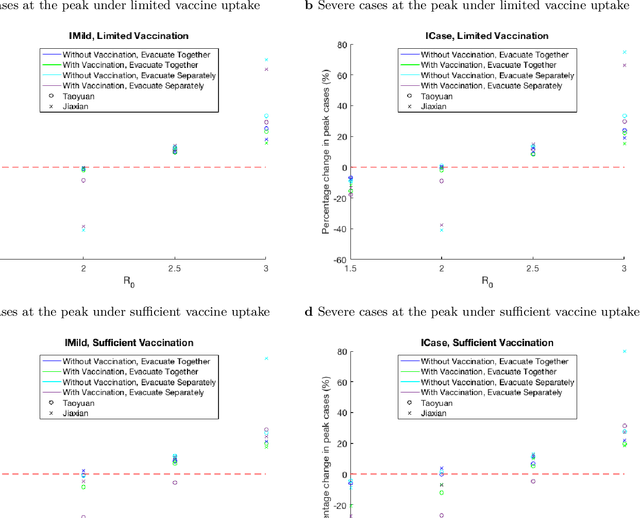
Abstract:Since COVID-19 vaccines became available, no studies have quantified how different disaster evacuation strategies can mitigate pandemic risks in shelters. Therefore, we applied an age-structured epidemiological model, known as the Susceptible-Exposed-Infectious-Recovered (SEIR) model, to investigate to what extent different vaccine uptake levels and the Diversion protocol implemented in Taiwan decrease infections and delay pandemic peak occurrences. Taiwan's Diversion protocol involves diverting those in self-quarantine due to exposure, thus preventing them from mingling with the general public at a congregate shelter. The Diversion protocol, combined with sufficient vaccine uptake, can decrease the maximum number of infections and delay outbreaks relative to scenarios without such strategies. When the diversion of all exposed people is not possible, or vaccine uptake is insufficient, the Diversion protocol is still valuable. Furthermore, a group of evacuees that consists primarily of a young adult population tends to experience pandemic peak occurrences sooner and have up to 180% more infections than does a majority elderly group when the Diversion protocol is implemented. However, when the Diversion protocol is not enforced, the majority elderly group suffers from up to 20% more severe cases than the majority young adult group.
Improving debris flow evacuation alerts in Taiwan using machine learning
Aug 27, 2022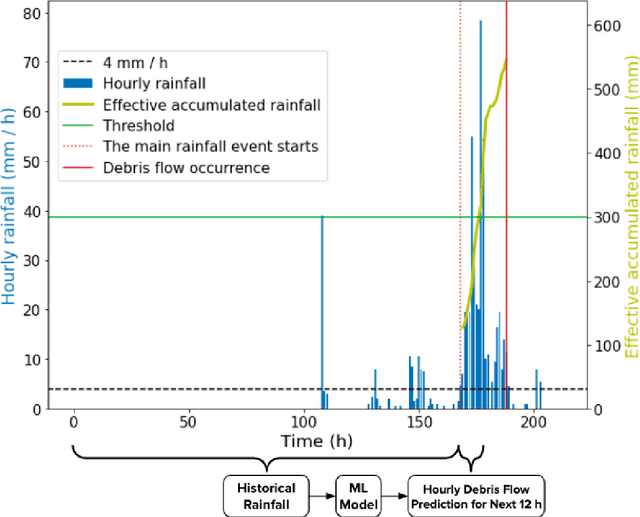

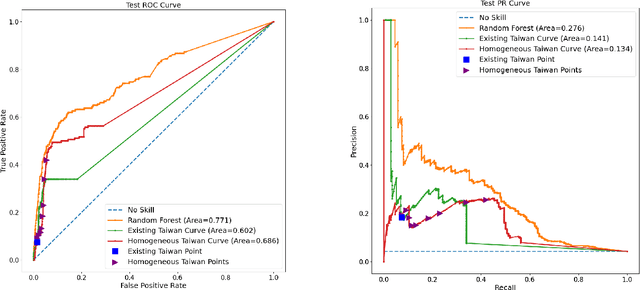
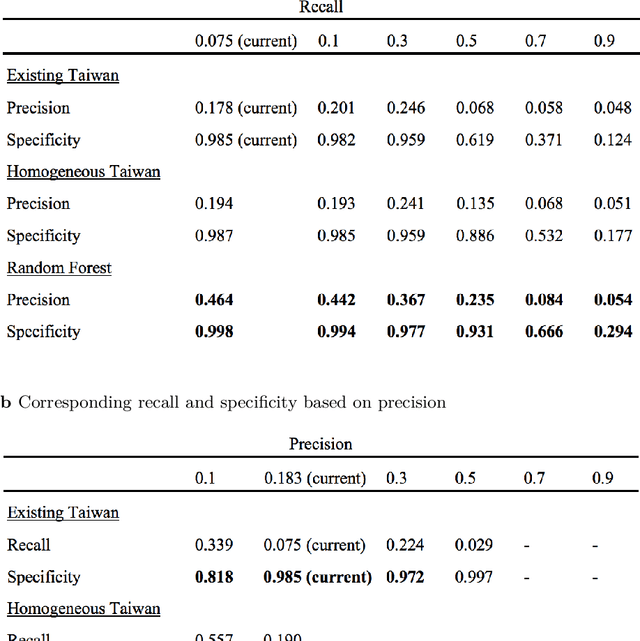
Abstract:Taiwan has the highest susceptibility to and fatalities from debris flows worldwide. The existing debris flow warning system in Taiwan, which uses a time-weighted measure of rainfall, leads to alerts when the measure exceeds a predefined threshold. However, this system generates many false alarms and misses a substantial fraction of the actual debris flows. Towards improving this system, we implemented five machine learning models that input historical rainfall data and predict whether a debris flow will occur within a selected time. We found that a random forest model performed the best among the five models and outperformed the existing system in Taiwan. Furthermore, we identified the rainfall trajectories strongly related to debris flow occurrences and explored trade-offs between the risks of missing debris flows versus frequent false alerts. These results suggest the potential for machine learning models trained on hourly rainfall data alone to save lives while reducing false alerts.
Routing algorithms as tools for integrating social distancing with emergency evacuation
Mar 05, 2021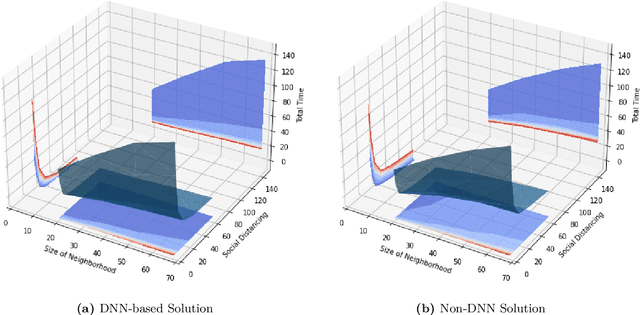
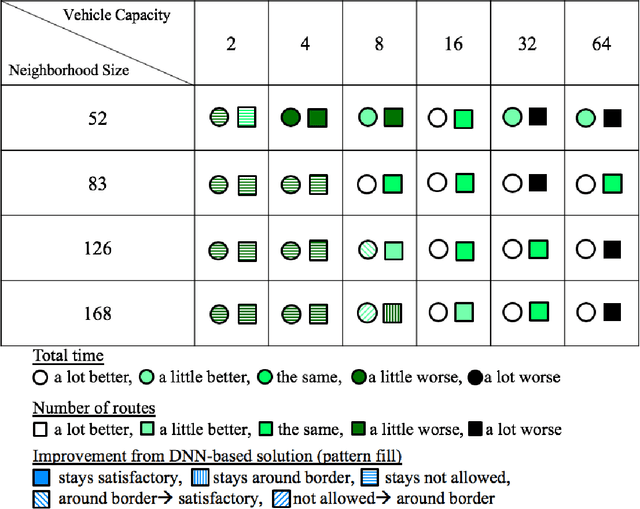
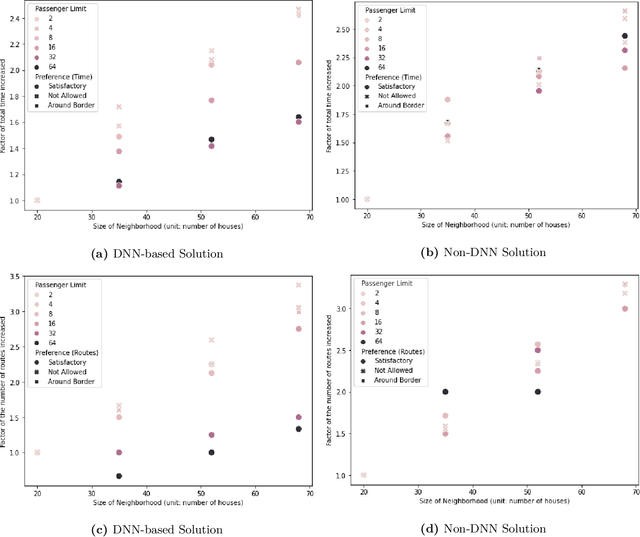
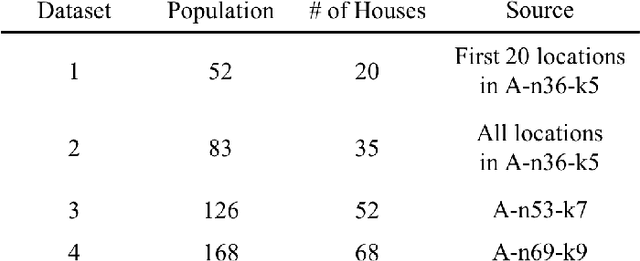
Abstract:In this study, we explore the implications of integrating social distancing with emergency evacuation when a hurricane approaches a major city during the COVID-19 pandemic. Specifically, we compare DNN (Deep Neural Network)-based and non-DNN methods for generating evacuation strategies that minimize evacuation time while allowing for social distancing in rescue vehicles. A central question is whether a DNN-based method provides sufficient extra efficiency to accommodate social distancing, in a time-constrained evacuation operation. We describe the problem as a Capacitated Vehicle Routing Problem and solve it using one non-DNN solution (Sweep Algorithm) and one DNN-based solution (Deep Reinforcement Learning). DNN-based solution can provide decision-makers with more efficient routing than non-DNN solution. Although DNN-based solution can save considerable time in evacuation routing, it does not come close to compensating for the extra time required for social distancing and its advantage disappears as the vehicle capacity approaches the number of people per household.
A Study on AI-FML Robotic Agent for Student Learning Behavior Ontology Construction
Jun 27, 2020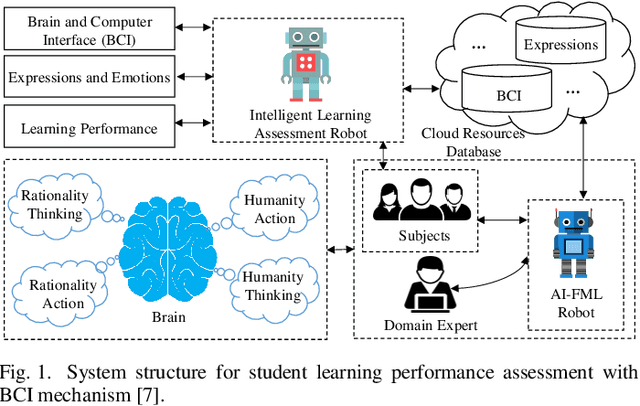
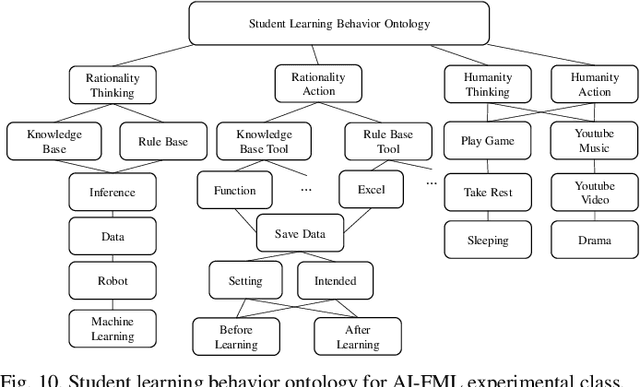
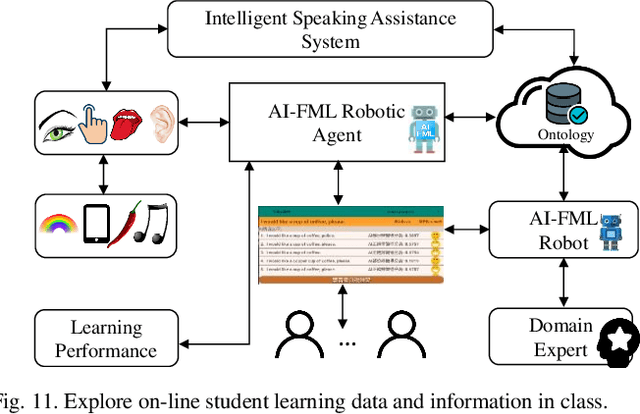
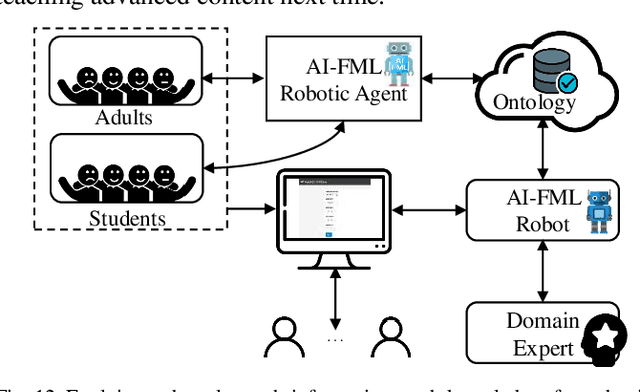
Abstract:In this paper, we propose an AI-FML robotic agent for student learning behavior ontology construction which can be applied in English speaking and listening domain. The AI-FML robotic agent with the ontology contains the perception intelligence, computational intelligence, and cognition intelligence for analyzing student learning behavior. In addition, there are three intelligent agents, including a perception agent, a computational agent, and a cognition agent in the AI-FML robotic agent. We deploy the perception agent and the cognition agent on the robot Kebbi Air. Moreover, the computational agent with the Deep Neural Network (DNN) model is performed in the cloud and can communicate with the perception agent and cognition agent via the Internet. The proposed AI-FML robotic agent is applied in Taiwan and tested in Japan. The experimental results show that the agents can be utilized in the human and machine co-learning model for the future education.
PFML-based Semantic BCI Agent for Game of Go Learning and Prediction
Jan 10, 2019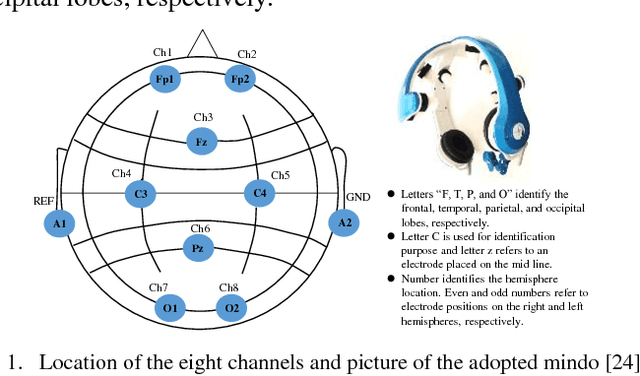
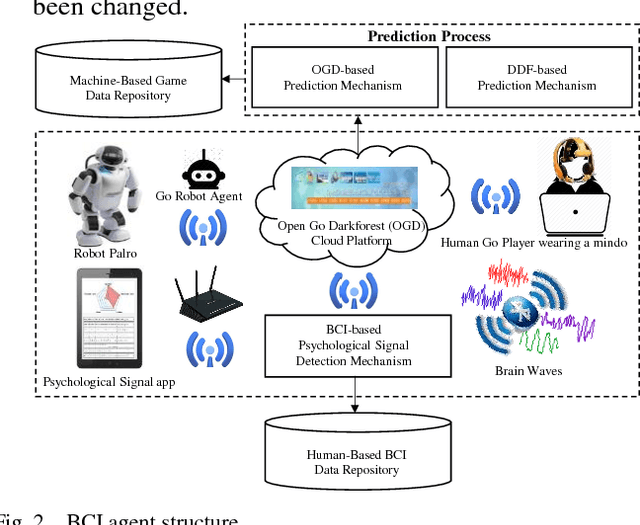
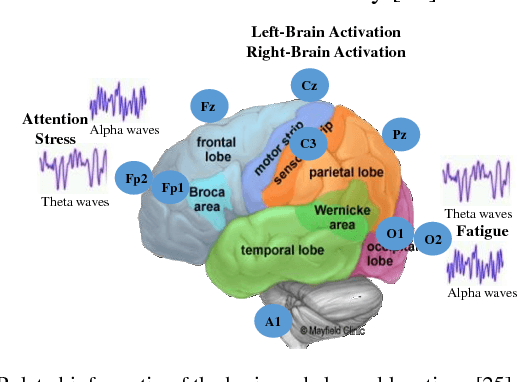
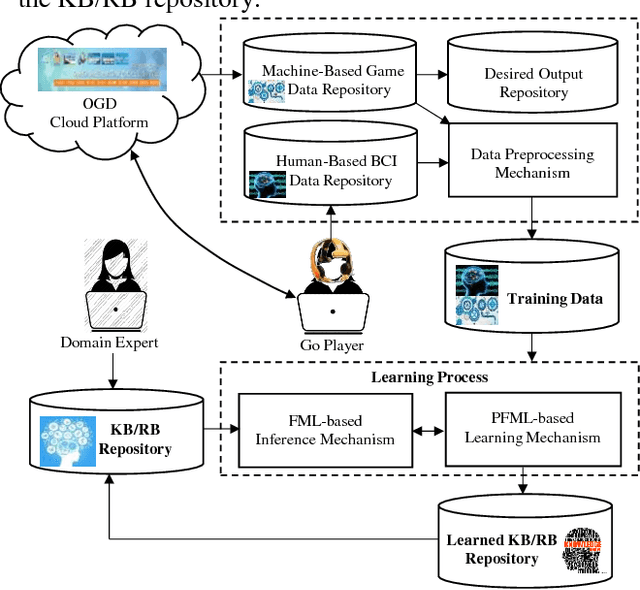
Abstract:This paper presents a semantic brain computer interface (BCI) agent with particle swarm optimization (PSO) based on a Fuzzy Markup Language (FML) for Go learning and prediction applications. Additionally, we also establish an Open Go Darkforest (OGD) cloud platform with Facebook AI research (FAIR) open source Darkforest and ELF OpenGo AI bots. The Japanese robot Palro will simultaneously predict the move advantage in the board game Go to the Go players for reference or learning. The proposed semantic BCI agent operates efficiently by the human-based BCI data from their brain waves and machine-based game data from the prediction of the OGD cloud platform for optimizing the parameters between humans and machines. Experimental results show that the proposed human and smart machine co-learning mechanism performs favorably. We hope to provide students with a better online learning environment, combining different kinds of handheld devices, robots, or computer equipment, to achieve a desired and intellectual learning goal in the future.
 Add to Chrome
Add to Chrome Add to Firefox
Add to Firefox Add to Edge
Add to Edge